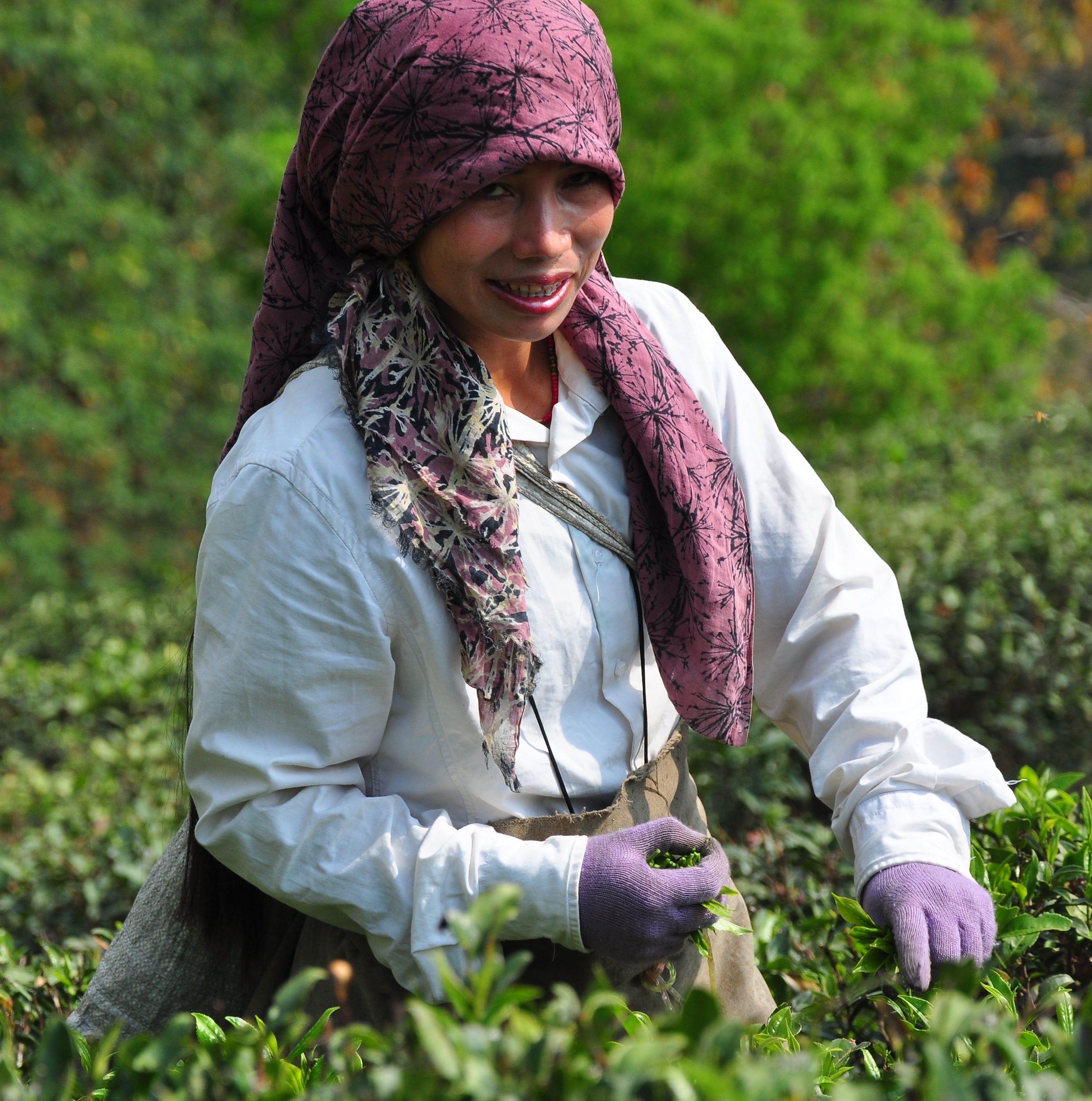Excess moisture is then removed from these wilted leaves (withering) by either putting the leaves in a trough through which hot and cold air are blown or just by placing under the sun.
Disruption
This is a geeky way of saying the leaves are further torn or bruised in order to quicken oxidation. This process does not take place in the manufacturing process of the white tea at all. Instead the leaves and buds that make white tea are immediately baked dry to stop the tea being further oxidised. From here some tea producing areas prefer to slightly roll their whites while some prefer to leave it untouched.
Rolling
Although the term may bring about happy mental images of you rolling about in the park in the summer while a glass of iced tea awaits, technically this is the last thing that is happening. The damp leaves are shaped into wrinkled strips by hand or machines. This action allows some of the oils and sap of the leaves to ooze out and coat the leaves making the tea yummier. These strips of tea can then be formed into other shapes, such as being rolled into spirals, kneaded and rolled into pellets, or tied into balls, cones and other elaborate shapes.
Oxidation/Fermentation
Oxidation is the exposure of the enzymes of the crushed leaves to the air and fermentation is the action of microbes on the tea leaves itself. Although these terms are used interchangeably in the tea industry, for the sake of clarity, we will talk about both terms as they have been described here. Oxidation involves leaving the teas in a temperature controlled room and letting the leaves turn progressively darker. The process can be controlled and stopped when required depending on the tea being produced. So we have green tea which is left for the shortest time to oxidise; the oolongs left for a longer time and the black teas left the longest until the leaves have turned the darkest. Even in this process, varieties can be created by changing the time the leaves are left to oxidise.
Fixing/ “Kill tea”
This process does not kill the tea as the name suggests, rather it stops oxidation. The various methods for this vary from steaming the tea to baking the tea. In some teas like white teas, fixing is done along with drying. Some regions roll and shape their damp teas after this process.
Drying (Firing)
Finally firing or drying the teas completes the process. This can be done by panning, sunning, air drying in dryers or baking depending on the regions of production. After this stage, Flavoured teas are manufactured by spraying the tea with aromas and flavours or by storing them with their flavorants.
Aging
Now there is black, green, oolong and white teas—and then there is Pu-erh. This complicated sounding tea needs to be fermented microbially(using helpful bacteria) and produces the darkest liquor. They are produced and compressed into different shapes ready for the market.





